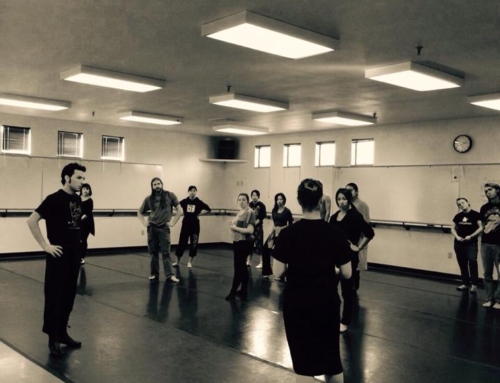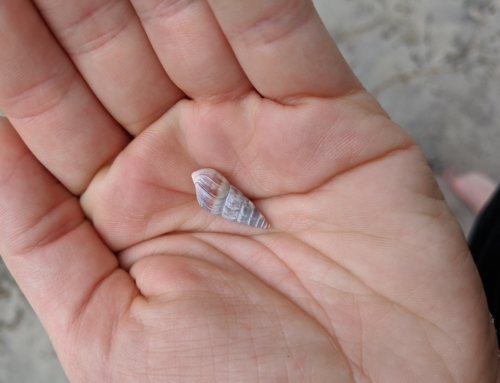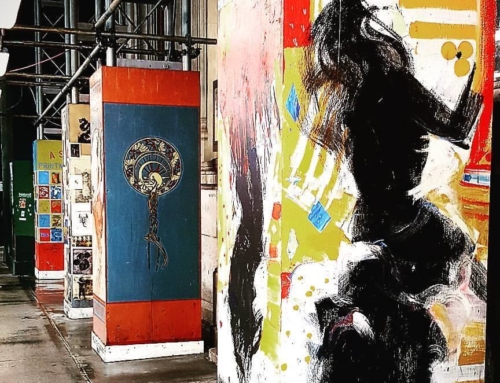In the 21st century, with Facebook and Instagram and all the other social media sites, we’ve gotten used to instant gratification. We post a picture of ourselves, what we’re eating, something funny, etc., and immediately at least a dozen people ‘like’ it. We don’t really have to do anything to get people to like us, so we share some aspect of our life, one usually taken out of context to make it look like we live a far more luxurious life than we actually live.
On tour, we joked about how all the photos we post to Facebook of the theaters and cities we go, the food we eat, the costumes we get to wear make touring look like a life of luxury. As far as anyone can tell from social media, tour is like a vacation. However, tour is actually extremely exhausting and not at all gratifying. We are constantly traveling, moving in and out of theaters and hotels to the point where it all becomes a blur–I feel like the whole month on tour disappeared into some vortex, never to be recuperated. We also rarely have any interaction with audiences, so other than the applause, we can’t know if we ‘touched’ anyone in the audience or if our work is appreciated. So the photos we post give a bit of instant gratification that we don’t get from simply doing our job. It’s as if performing alone isn’t enough; we have to show the world that it’s great, when the reality is, it’s not all roses.
 |
| My facebook profile picture by photographer Angelica Escoto. |
I fell into the instant gratification trap just the other day on Facebook. I’d been working really hard in the studio since returning from tour, working on all the technique corrections I’d gotten while on tour and rehearsing some of the steps I’d learned from fellow company members. Thanks to several important critiques I’d gotten from the rehearsal director and director, I had a lot to work on and was seeing improvement in my dancing. Those key corrections coupled with my time in the studio every day were showing a difference in my dancing. Yet there was no one there to pat me on the back, nothing other than my own self worth to make me feel good about the work I was putting in. Not even any big upcoming shows to perform what I’d been working on. So, I think subconsciously I decided to change my Facebook profile picture to a flamenco photo by a professional photographer. By the next morning I’d gotten 80 some ‘likes.’ That coupled with nice comments made me feel quite ‘flamenca.’ It’s a great photo, but it tells you nothing about my dancing. Mostly it shows that I have an awesome costumer (http://barbarafym.com/details) and I know a great photographer (http://angelicaescoto.com/). The photo alone can’t tell you whether or not I practice every day or if I take the corrections I get to heart.
In the words of someone else, all this selling of images causes the following: “Longggggg gone are the days where we worked, studied and prepared for a profession…We want fast, instant gratification…The easy way….Lots of good pictures, websites, marketing on social media can fool people and sell the most inadequate, incompetent, unskilled and unprepared….Don’t believe the hype…Sweat for yours, learn your stuff…”
A teacher of mine in Sevilla referred to dancers who had all the photos and had the ‘look’ of a flamenco dancer, but could not dance, as the “Mamá, quiero ser flamencas.” Referring to the idea that they want their moms to buy them flamenco shoes, they want to dress like the gypsy flamenco artists, but they don’t want to get their hands in the mud–or in the case of flamenco sweat, be sore, have aching feet, or study the music.
Flamenco does depend on the selling of images. We all know the stereotypical flamenco dancer image, and audiences eat that up. But when all that’s being sold to the public is the image, the stereotype, the look, the audience and the art get short changed.
That’s where we must distinguish between entertainment and artistry. An artist leaves a mark on the audience whereas an entertainer entertains, charms, and engages an audience, but does not necessarily leave a lasting impression on the audience–they don’t ‘touch’ the audience. An artist has technique that they constantly improve upon in order to better clearly express what they are trying to say. This is not to say that artists don’t also entertain or that entertainers can’t also be artists–it is indeed a blurry line. And it’s not that an artist does not also have to ‘sell’ themselves through social media. But there is a core difference between an entertainer and an artist, and I think it resides at the most fundamental level of why the performer does what he does. At the most profound level it is the motivation of the individual that let’s us distinguish between entertainer and artist.









Leave A Comment